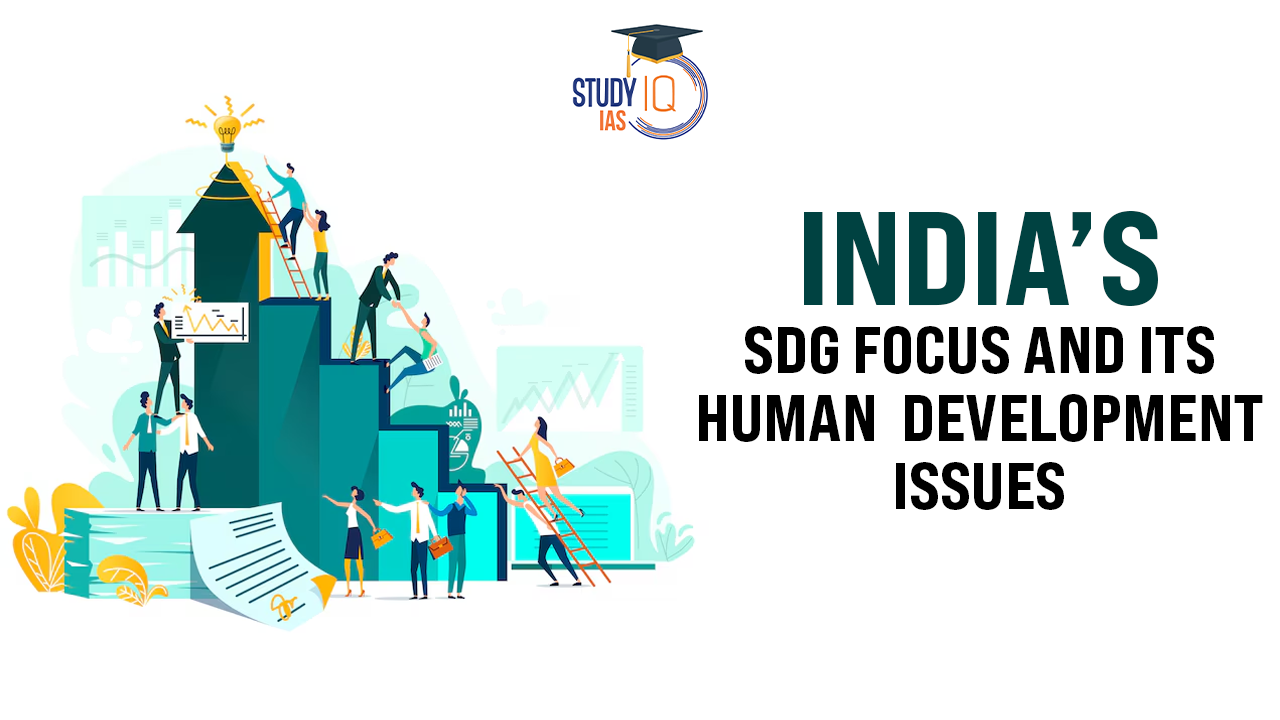Table of Contents
Highlight of the Human Development Report 2024
- India’s rank is 134 out of 193 countries
- The report categorised India under the medium human development bracket with an HDI value of 0.644.
- India’s HDI value stagnated at 638 in 2019-2020, fell to 0.633 in 2021, but improved to 0.644 in 2022.
- This reflects a 4% increase from an HDI of 0.434 in 1990.
- Regional Comparison:
- Malaysia (63)
- Thailand (66)
- China (75)
- Sri Lanka (78)
- Indonesia (112)
- Bhutan (125)
- Bangladesh (129)
Relation between HDI and SDG
- The HDI has 3 key dimensions—life expectancy (long and healthy life), education (expected years of schooling and mean years of schooling), and income per capita (standard of living).
- These dimensions are closely linked to SDG-3 (good health), SDG-4 (quality education), SDG-5 (gender equality), SDG-8 (decent work), and SDG-10 (reduced inequality).
| Gender Development Index (GDI) |
| The GDI measures gender disparities in human development by comparing HDI values for women and men. |
Gender Gaps in Development
- Among 42 ‘medium human development countries’, India is one of seven with significant gender inequality in HDI, with a gap exceeding 10% between men and women.
- Other countries with similar gaps include Bangladesh, Nepal, Uganda, and Morocco.
|
Fact |
|
Income Inequality
- Rising Income Inequality: Income inequality is increasing in India, where the richest 1% hold 21.7% of the total income.
- Comparison with Neighbours: In Bangladesh, the richest 1% hold 11.6% of income, in China 15.7%, in Bhutan 18.1%, and in Nepal 9.7%.
- Global Comparison: India’s income inequality is higher than the world average (17.5%) and the South Asia average (19.6%).
- It is also higher than other regional groups like East Asia and the Pacific (16.5%) and Europe and Central Asia (15.7%).
Policy Recommendations
- India needs to focus on addressing gender disparities and rising income inequality to make meaningful progress toward the Sustainable Development Goals (SDGs).
- These issues remain significant barriers to achieving human development and sustainable development in the country.


 Unlocking the Potential of India–Afric...
Unlocking the Potential of India–Afric...
 Speedy Justice and the Crisis in Consume...
Speedy Justice and the Crisis in Consume...
 Kavachi Volcano: Location, Features, Eru...
Kavachi Volcano: Location, Features, Eru...

























